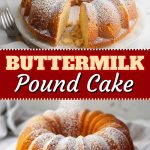
Buttermilk pound cake is a classic that promises comfort in every bite.
It offers a rich, buttery flavor with a moist, tender texture. Every bite melts in your mouth, leaving a delightful aftertaste.
The buttermilk adds a light tang, enhancing its taste. Perfectly balanced, it’s neither too sweet nor too dense.
Enjoy it with coffee or dress it up with fresh fruit and whipped cream.
The recipe is simple, but the cake is sophisticated. It’s proof that sometimes, the simplest ingredients create the most memorable flavors.
This buttermilk pound cake will remind you of something your grandma made. Let’s get baking!
Ingredients for Buttermilk Pound Cake
Here are the key components of buttermilk pound cake.
- All-Purpose Flou – The backbone of your cake that provides structure.
- Baking Powder & Baking Soda – These leavening agents give your cake lift and lightness, ensuring it’s not too dense.
- Salt – Just a touch enhances all the flavors, making the sweet taste even sweeter.
- Unsalted Butter – Room-temperature butter creams beautifully, adding richness and moisture to your cake.
- Granulated Sugar – It sweetens the deal, making your cake irresistibly delicious.
- Eggs – Room-temperature eggs mix in smoothly, binding the batter and adding structure.
- Vanilla Extract – This brings a warm, aromatic flavor that’s subtle yet impactful.
- Buttermilk – It introduces a slight tanginess while making the cake tender and moist.
- Powdered Sugar – A light dusting adds a sweet finish and a touch of elegance to your cake.
How to Substitute Milk for Buttermilk
Don’t have any buttermilk? No sweat! You can whip up a buttermilk alternative in minutes.
Just mix 1 tablespoon of vinegar or lemon juice with enough milk to make a cup. Stir until it’s well mixed. Let the mixture sit out for about 5 to 10 minutes or until it curdles.
How to Make Buttermilk Pound Cake
Making buttermilk pound cake is a walk in the park with these easy steps. Let’s get baking!
1. Preheat and prep pan. Crank your oven to 325 degrees Fahrenheit and grease and flour a 10-inch bundt pan.
2. Whisk the dry ingredients. Grab a bowl and mix your flour, baking powder, soda, and salt.
3. Cream the butter and sugar. Beat them together until light and fluffy, about 3 to 5 minutes.
4. Beat in the eggs. Add them one by one, ensuring each is well mixed in.
5. Mix in the dry mixture and buttermilk. Start with half the dry mix, then pour in the buttermilk and vanilla. End with the rest of the flour. Stir just until the flour disappears.
6. Bake. Pour the batter into your pan and bake for 60-70 minutes. You’ll know it’s ready when a toothpick inserted into the center comes out with just a few crumbs.
7. Cool, then serve. Let the cake cool in the pan for a bit, then flip it onto a rack to cool completely. Dust with powdered sugar on top. Slice, serve, and enjoy!
Tips for the Best Pound Cake
Make your cake unforgettable with these handy tips and tricks!
- Measure flour with care. Spoon the flour into your measuring cup and level it off with a knife for the perfect measurement. This prevents the cake from becoming too dense.
- Room-temp is best! Bring butter, eggs, and buttermilk to room temperature to help them blend better, creating a smooth batter.
- Don’t skimp on the creaming. Spend a good 5 minutes on creaming the butter and sugar. It’s worth the wait for that fluffy texture.
- Don’t overmix! Overmixing can make the cake rise too quickly and then fall. Stop mixing as soon as streaks of flour disappear.
- Grease it up. Grease and flour your pan thoroughly to prevent the cake from sticking.
- Out of powdered sugar? Blitz granulated sugar in a blender until it’s fine and powdery.
- Try a simple syrup trick. If your cake’s gone a bit dry, brush it with simple syrup to bring back the moisture.
- Tame the browning. If the cake is browning too quickly, loosely cover it with aluminum foil for the remaining baking time.
How to Make a Homemade Cake Release
To guarantee your cake effortlessly releases from the pan, whip up an easy homemade cake release. Here’s how:
1. Blend equal quantities of all-purpose flour, vegetable shortening, and vegetable oil until the mixture is smooth.
2. Use a pastry brush to evenly apply this mixture to your cake pan before pouring in the batter.
This concoction can also be stored in the refrigerator in a sealed container for future use.
How to Store & Freeze
Want to keep your pound cake fresh for later? Here’s your quick guide to doing it right.
To Store: Keep your cake fresh at room temperature for up to 5 days. Just ensure it’s totally cool before storing it in an airtight container.
To Freeze: Wrap up leftovers or individual slices tightly in plastic wrap, then slide them into a freezer bag. They’ll keep well for up to 3 months.
When you’re ready for a treat, let the cake thaw out on the counter for a couple of hours.
More Pound Cake Recipes
Paula Deen Sour Cream Pound Cake
1920’s Ritz Carlton Lemon Pound Cake
Buttermilk Pound Cake
12
servings15
minutes1
hour10
minutesThis old-fashioned buttermilk pound cake is full of nostalgia! It’s moist, sweet, and so delicious!
Ingredients
3 cups all-purpose flour
1 teaspoon baking powder
1⁄2 teaspoon baking soda
1 teaspoon salt
1 1⁄2 cups unsalted butter, room temperature
2 1⁄2 cups granulated sugar
6 large eggs, at room temperature
1 tablespoon vanilla extract
1 cup buttermilk, room temperature
powdered sugar, for dusting
Instructions
- Preheat the oven to 325 degrees Fahrenheit (165°C). Liberally grease and flour a 10-inch bundt pan. Set aside.
- In a medium bowl, whisk the flour with the baking powder, baking, soda, and salt. Set aside.
- In a separate large mixing bowl, beat the butter and sugar until light and fluffy with an electric mixer. About 3-5 minutes. Scrape the sides and bottom of the bowl halfway through mixing.
- Beat in the eggs, one at a time, mixing well between each addition. Scrape the sides of the bowl as needed.
- Add half of the dry ingredients to the egg-butter mixture and mix by hand until just combined. Stir in the buttermilk and vanilla, followed by the rest of the flour. Gently stir until no streaks of flour are visible.
- Pour the batter into the prepared bundt pan and bake for 60-70 minutes or until a toothpick inserted into the center comes out with a few moist crumbs.
- Let the pound cake cool in the pan for 10-15 minutes. Then, invert it onto a wire rack to cool fully. Dust with powdered sugar to serve, and enjoy!
Notes
- Ensure the butter, eggs, and buttermilk are at room temperature to blend easily into the batter.
- The cake needs at least 50 minutes in the oven. Don’t open the door any earlier, as it may cause the sponge to deflate.
- If the cake is browning too quickly, loosely cover it with aluminum foil for the remaining baking time.
Did you like the recipe?
Click on a star to rate it!
Average rating 5 / 5. Vote count: 2
No votes so far! Be the first to rate this post.
We are sorry that this post was not useful for you!
Let us improve this post!
Tell us how we can improve this post?

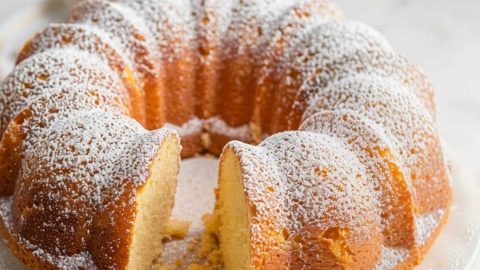
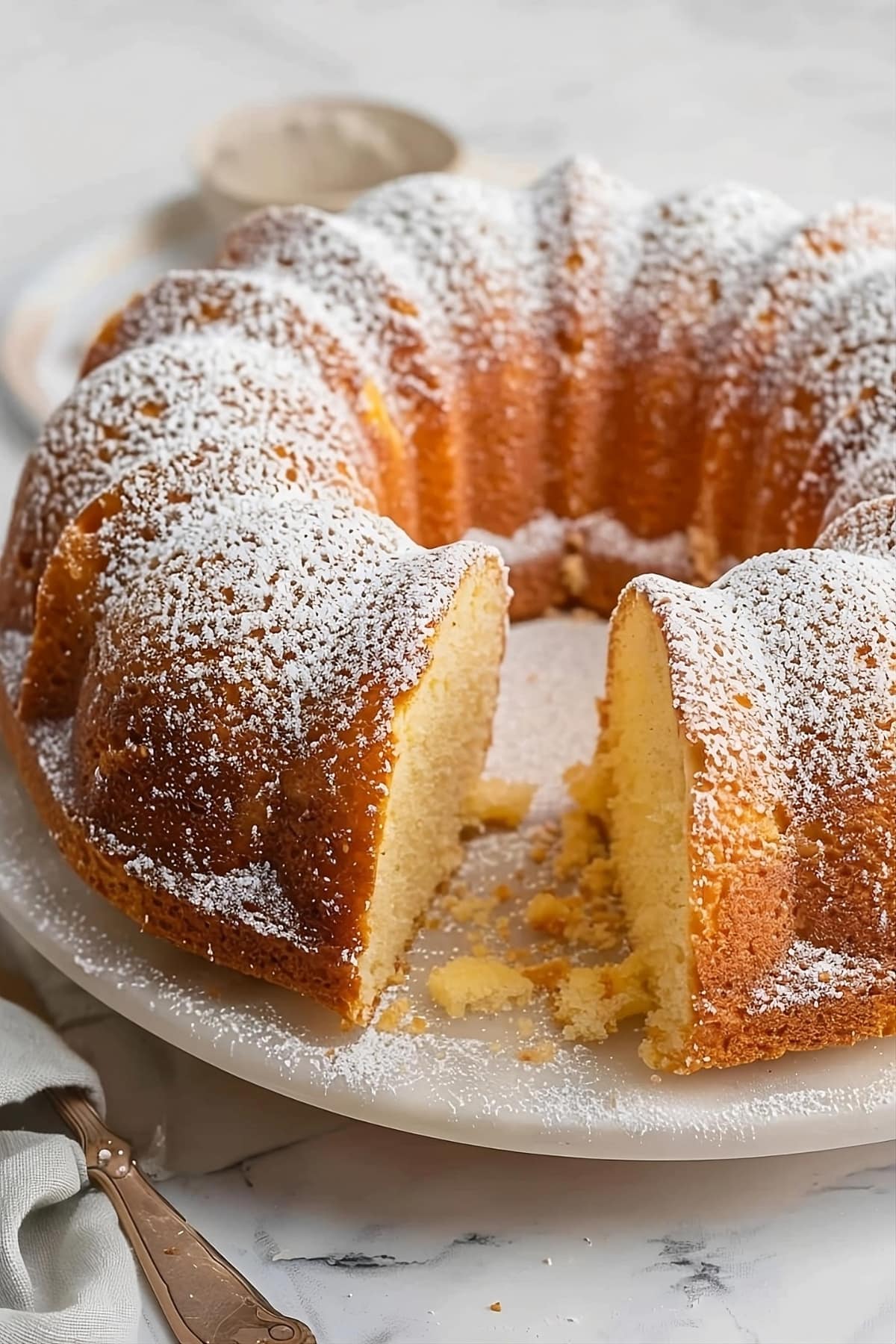
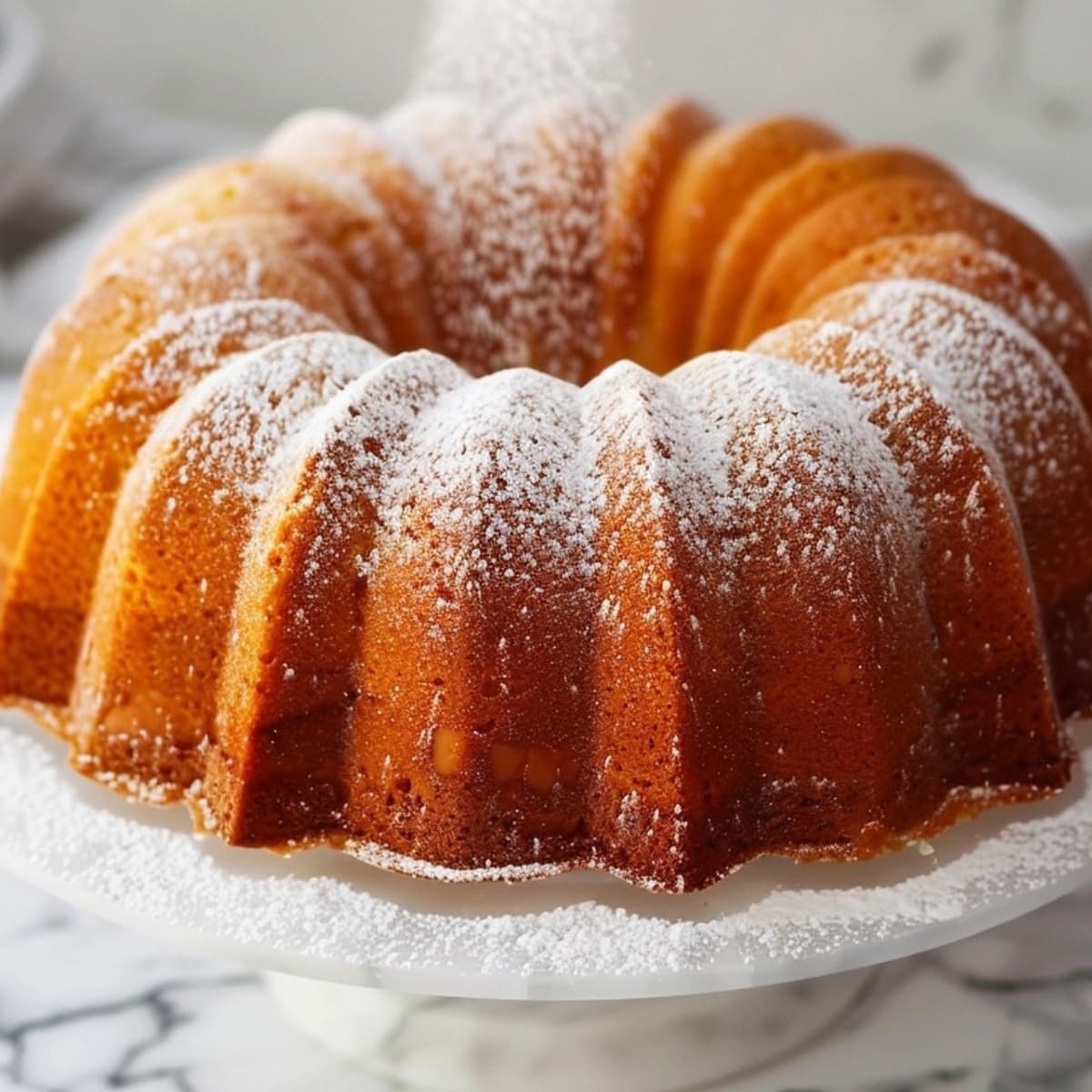
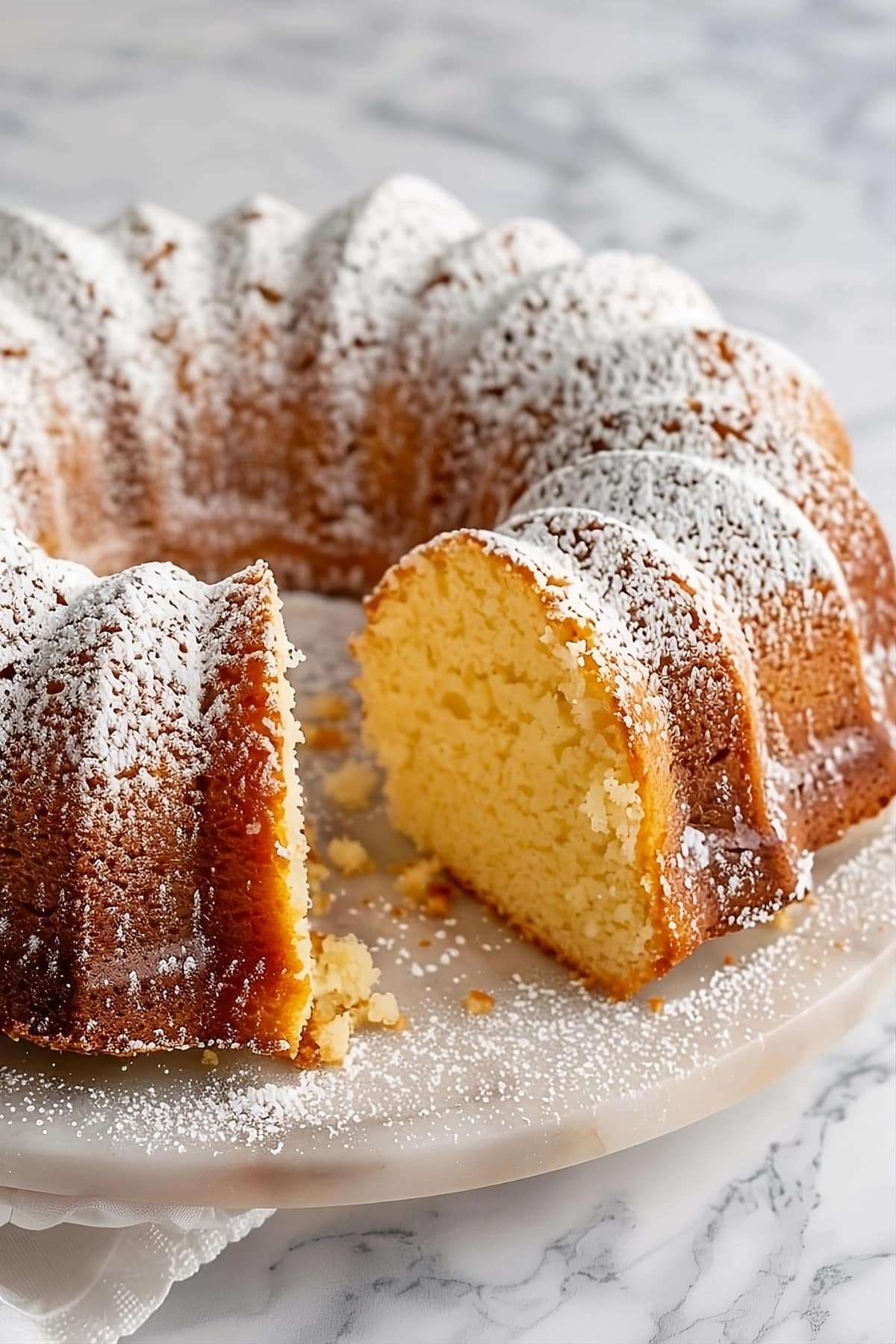
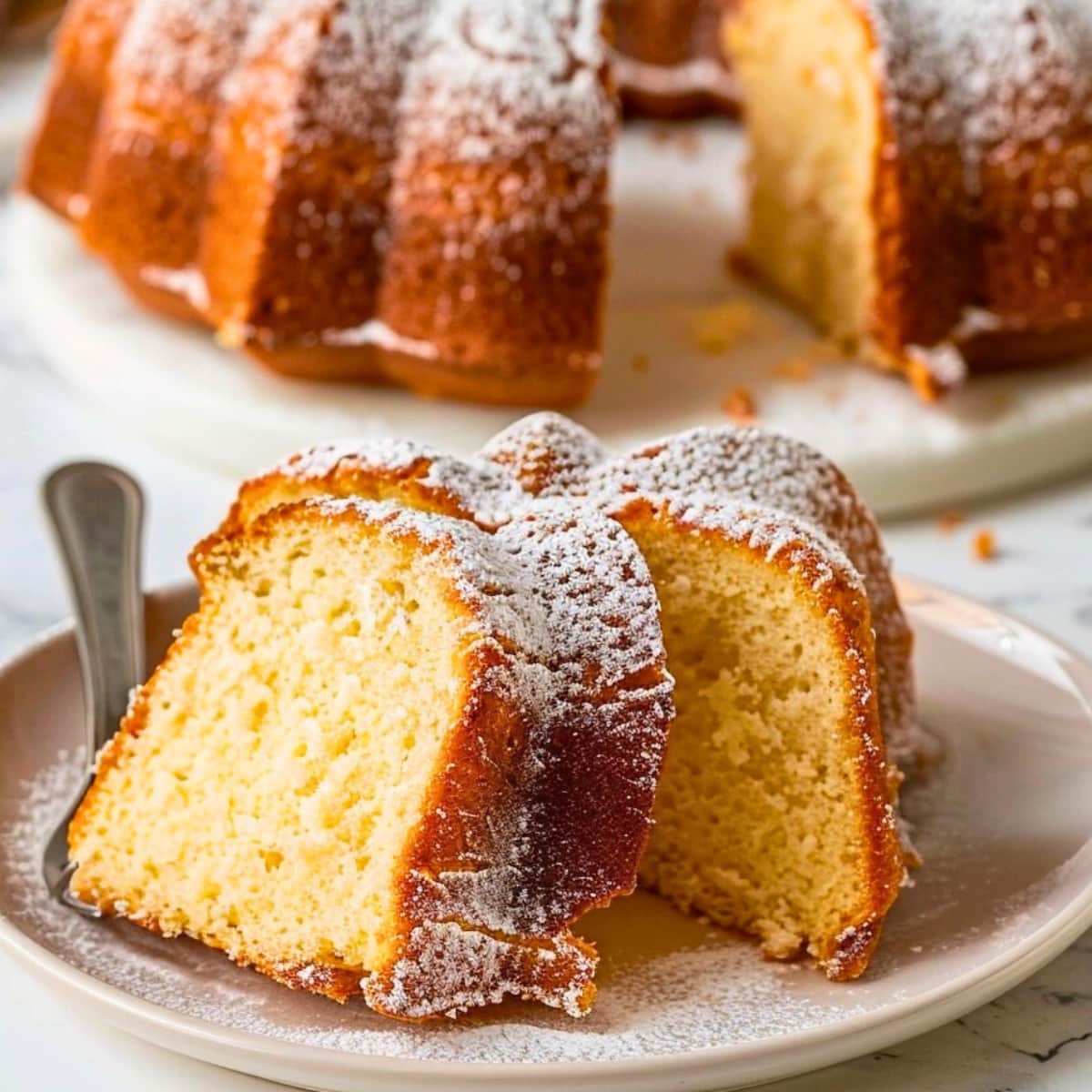
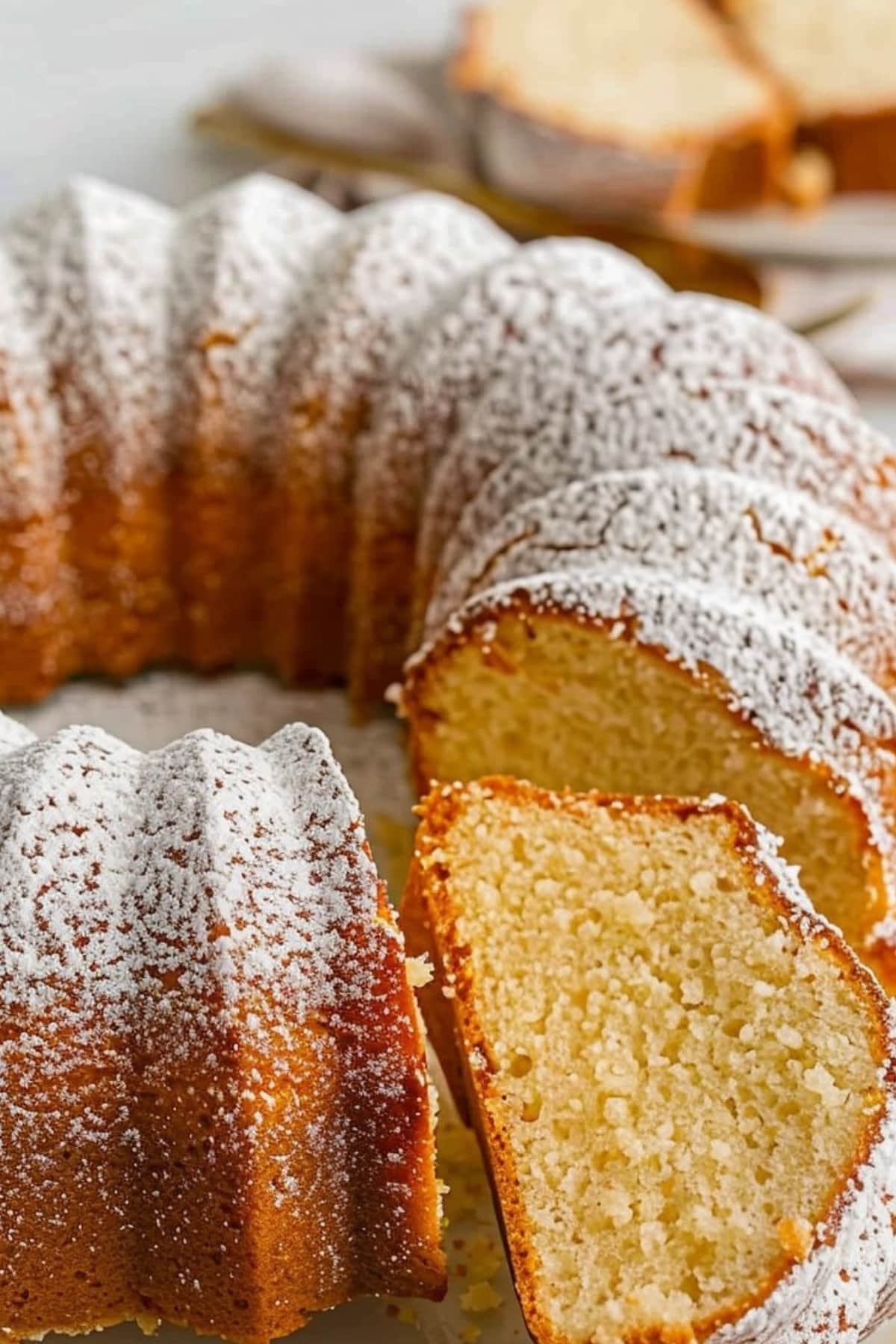
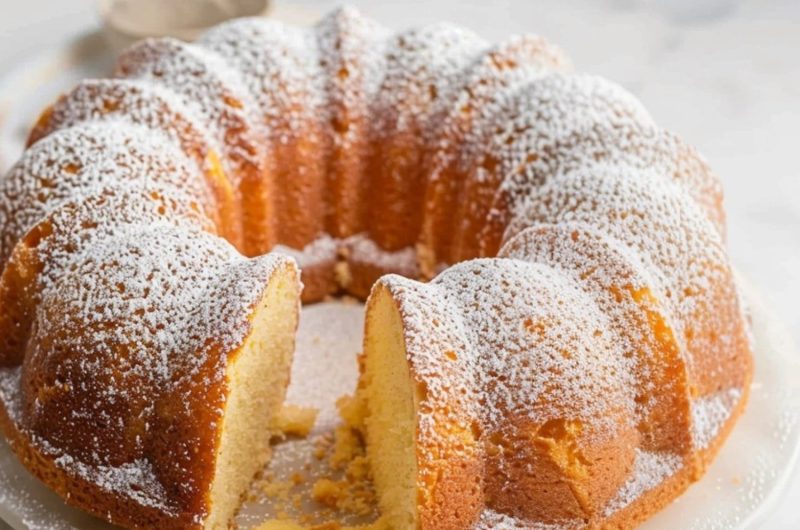
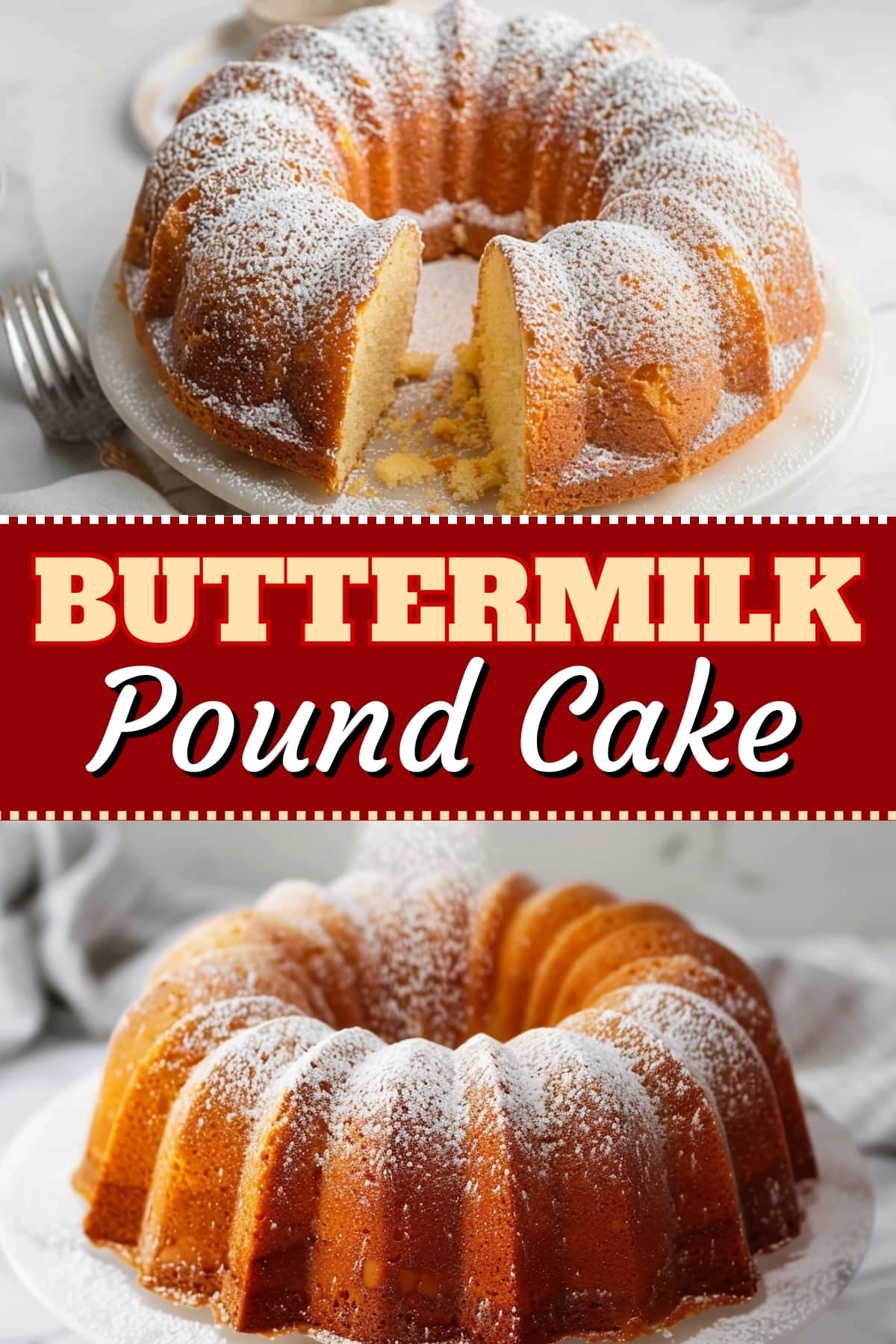
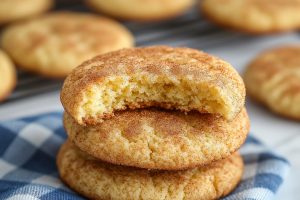



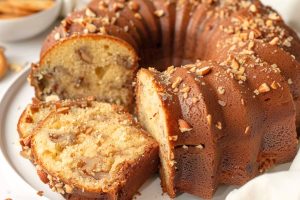

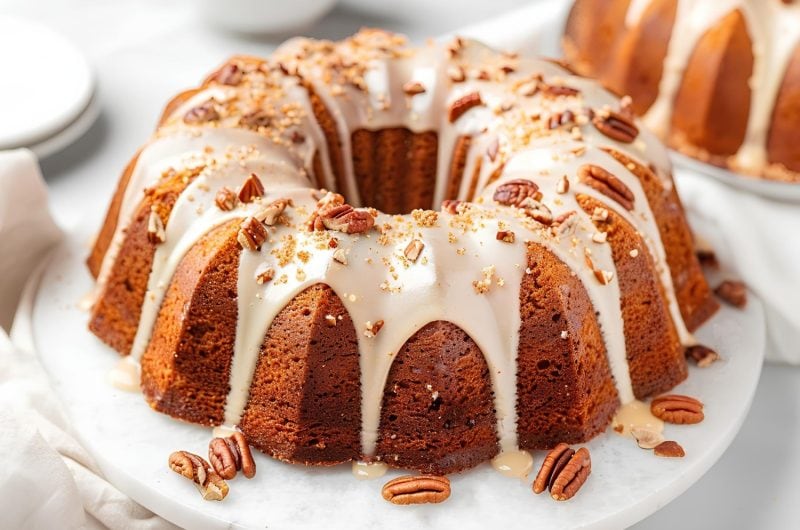
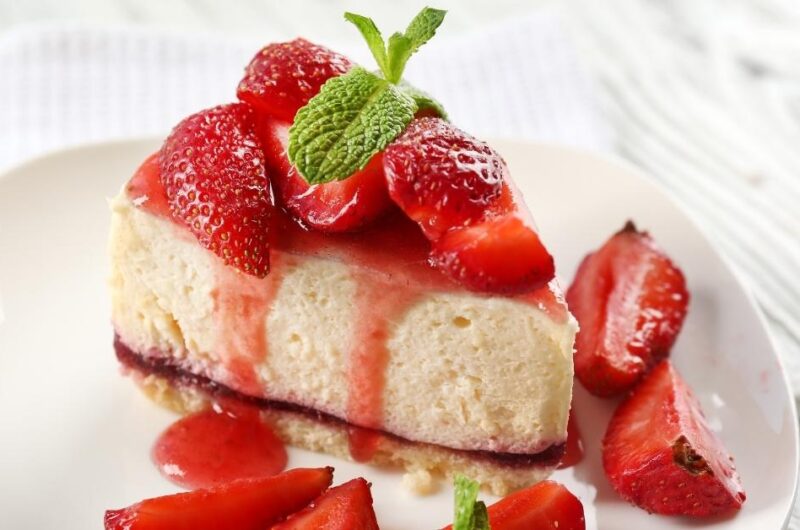
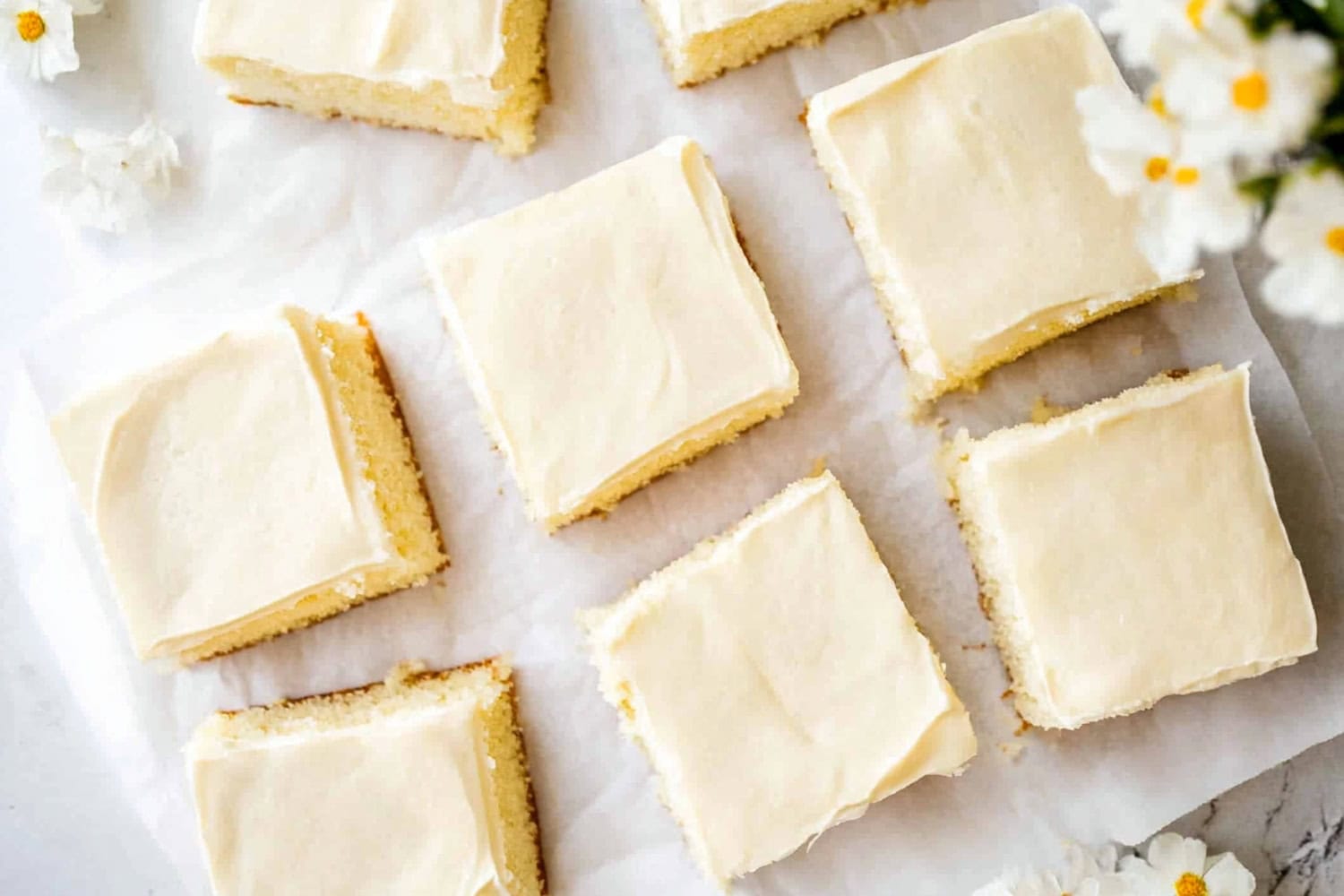
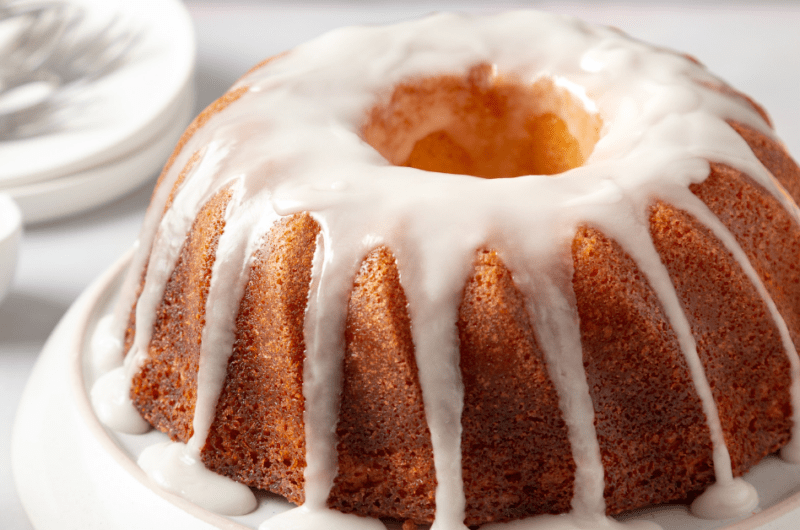
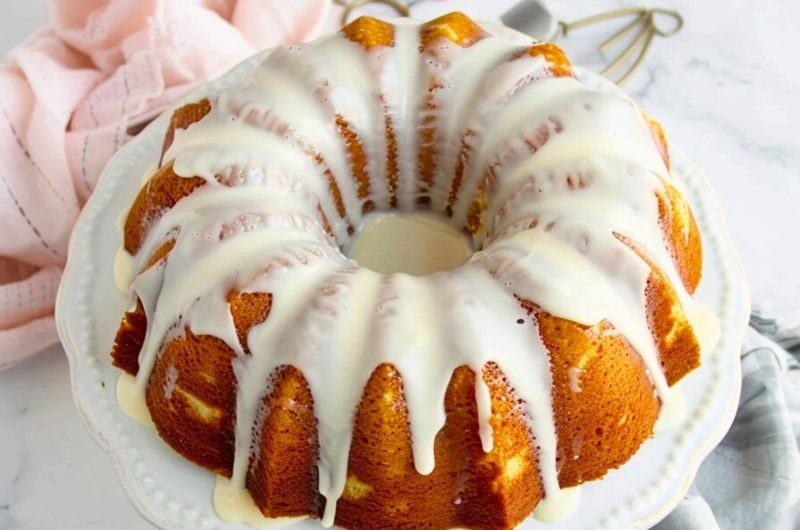
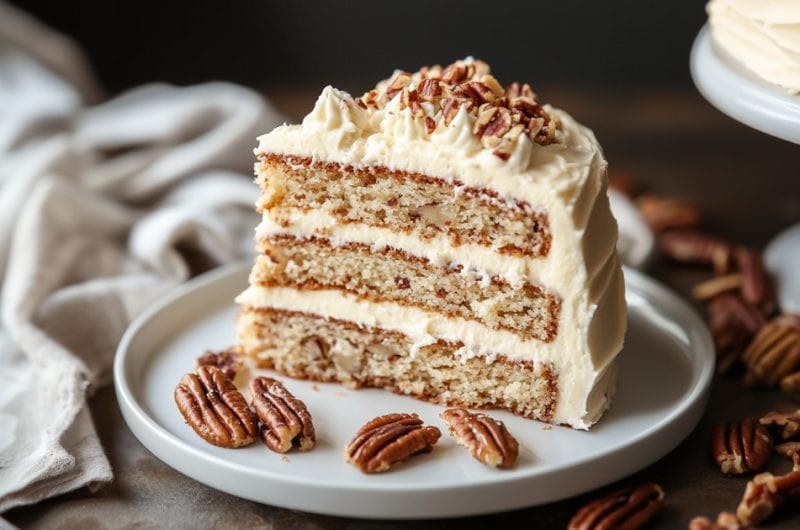
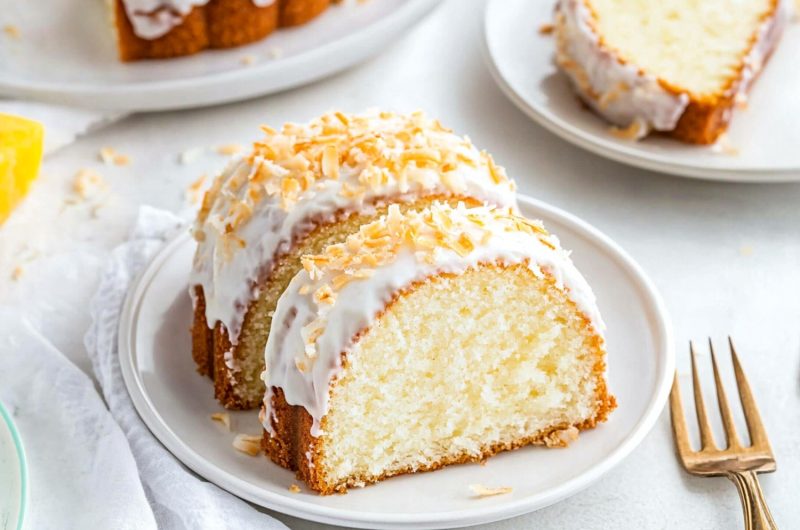
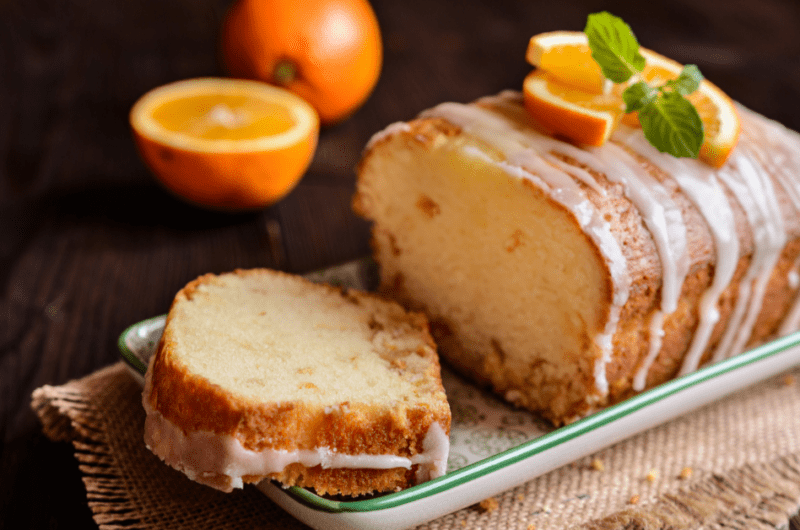
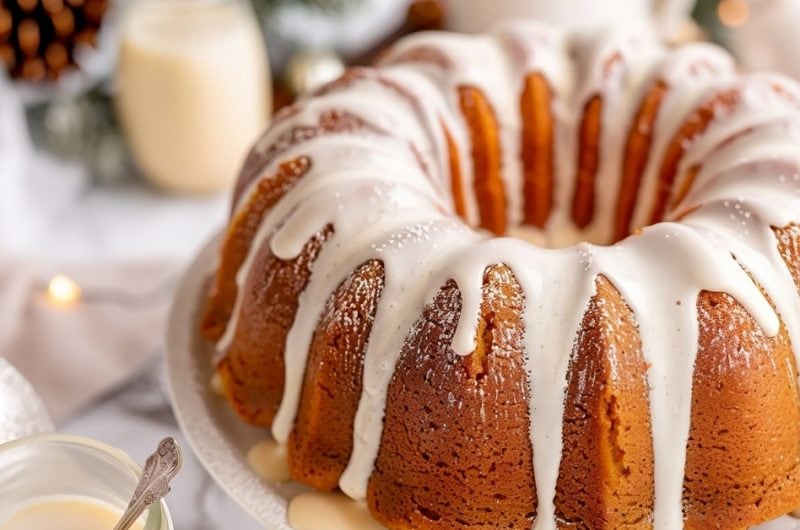

2 Responses
can I substitute almond Flour for wheat flour, if so what adjustment do I make?
Hi Carolyn!
Do you mean you’d like to replace the all-purpose flour with almond flour?
Unfortunately, that won’t work as a one-to-one swap. Here’s why:
Almond flour is made from ground almonds and has a much coarser, heavier texture than all-purpose flour. This can lead to a denser cake, which may not rise or hold together well.
Also, all-purpose flour contains gluten, which provides structure and helps the cake hold its shape. Almond flour is gluten-free, so without gluten, the cake might not bind well and could be crumbly or fall apart.
Finally, almond flour absorbs liquids differently. It has more fat content and less absorbency, which could cause the cake to feel too moist or greasy.
That said, if you want to try make this gluten-free, you could use a blend of 1:1 all-purpose gluten free flour and almond flour
I’ve never tried it, but I’d go with 2 cups all-purpose and 1 cup almond flour.
I’d also add another egg and an extra 1/4 teaspoon of each of the leavening agents to help counteract the density of almond flour and encourage a better rise.
Plus, almond flour already contains a lot of fat, so you might want to reduce the butter in the recipe by 1/4 cup to prevent the cake from becoming too greasy.
As I said, I haven’t tried it. So, if you prefer, you could search google for “bundt cake recipe with almond flour” and you should find something that works for you.
Hope this helps 🙂